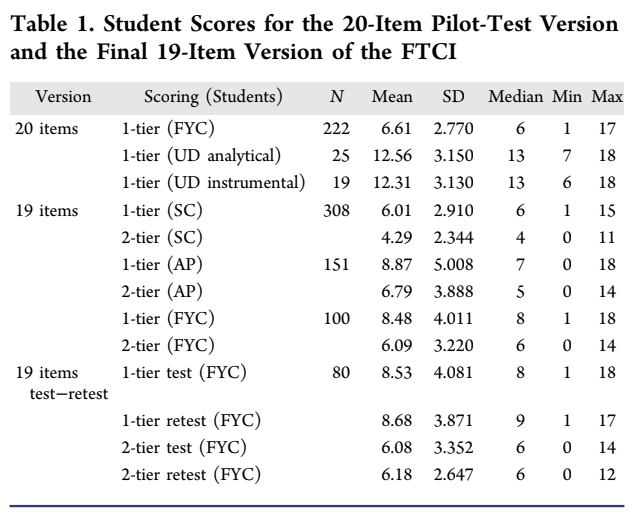Flame Test Concept Inventory - Atomic Emissions and Flame Test (FTCI)
Purpose
The Flame Test Concept Inventory – Atomic Emissions and Flame Test (FTCI) requires students to interact with macroscopic observations, namely, an inventory to measure students’ understandings about atomic emission in the context of flame test observations.
Population
The FTCI is commonly administered in high school and introductory college chemistry courses.
Typical Performance
Below are the performance results from the initial instrument development. The final version of the FTCI consists of 19 items, including four, two-tier answer−reason pairs. Student responses were scored both as a one-tier FTCI with 19 points possible (“1” for correct, “0” for correct) and again as a two-tier FTCI with 15 points possible (“1” for correct answers to both the answer and the reason tiers, “0” for all other responses). Table 1 summarizes the final version scores for secondary students (SC), secondary students enrolled in an AP chemistry course (AP), and first-year chemistry (FYC) students, including test−retest data.

Example question

Validity
Study describing the validation process for the ESICI:
Bretz, S. L., & Murata Mayo, A. V. (2018). Development of the flame test concept inventory: Measuring student thinking about atomic emission. Journal of Chemical Education, 95(1), 17-27.
Research
See the validation section for related articles.
Example LASSO Report
Please follow this link to our example report for concept inventories.
